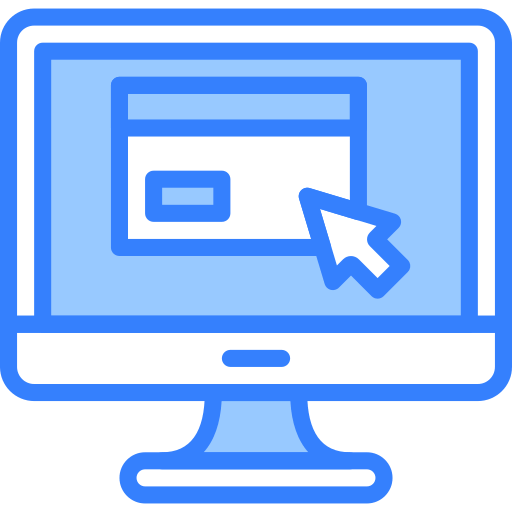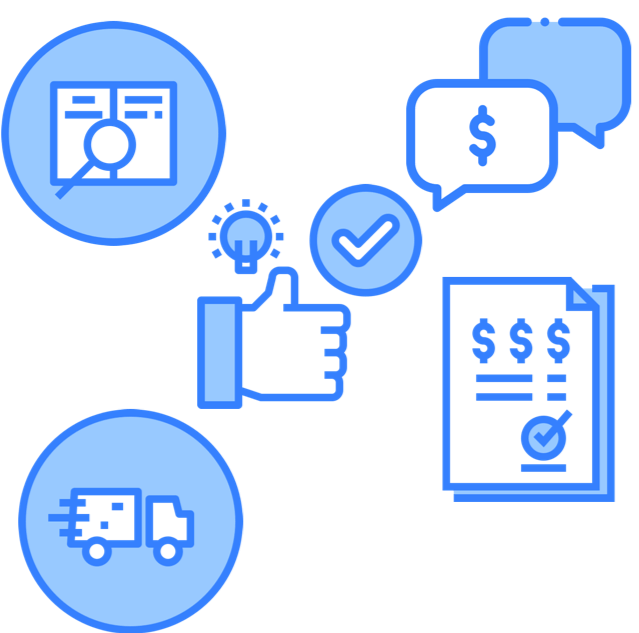In part 1 of this series, we discussed the latest trends in procurement for the 21st century. Building upon that, we’ll now highlight some modern digital procurement technologies and help you choose the right ones for your organization.
As more organizations are leveraging procurement technologies to increase operational efficiencies, reduce costs, and respond to market demand, it’s no longer an option to ignore the various digital transformation tools if you want to stay competitive and improve profit margins.
However, with the many solutions on the market, choosing the right technologies can be quite a daunting task.
To get the most of your IT budget, you should first devise a clear digital transformation strategy to guide the selection of technologies for your organization.
Here are some tools to consider based on the latest trends in procurement technologies:
Cloud-Based Procurement Software

Cloud computing provides the flexibility, scalability, and accessibility organizations require to manage procurement processes so they can meet fast-evolving market demands. These web-based platforms offer the capabilities needed for the various aspects of an end-to-end procurement process:
Bellwether
With standard features including requisitions, purchase orders, asset management, allocations, request for quotations, inventory management, reporting, invoicing, contract management, punchout capabilities, and budgeting/approval, this platform is designed to help companies improve efficiency and gain control of their spending.
Also, customized workflows and automated PO processing allow you to establish budget tolerances and/or thresholds while reducing labor costs associated with these manual tasks.
The software can be implemented as a cloud-based or on-premise hosted solution, offering the necessary flexibility and customization to meet specific business requirements.
Procurify
Covering the entire procurement process from request and approval to purchase, receive, and match & pay, Procurify offers an intuitive interface with features designed to help mid-sized companies track, control, and analyze their spending.
Some key features include customizable approvals, real-time budget tracking, spending analytics and reporting, vendor management, purchasing workflows, expense management, as well as the ability to process request, approval, and receive on mobile devices.
The platform integrates with many popular accounting and financial software applications, such as QuickBooks, NetSuite, and Amazon Business Punchout for seamless data exchange to improve efficiency while minimizing human errors.
SMART by GEP
This source-to-pay (S2P) procurement software unifies upstream sourcing and downstream procurement operations into a cloud-based platform with the capabilities to support direct and indirect spend management.
It offers various end-to-end procurement functionalities such as spend analysis, savings tracking, sourcing, contract management, supplier management, and a consumer-like purchasing experience.
By consolidating all procurement functions onto one platform, SMART helps organizations better identify opportunities, manage savings, ensure compliance, enable real-time information exchange, improve workflow, and facilitate collaboration to break down silos so they can deliver a customer-centric procurement experience.
AI-Driven Data Analytics
Advanced data analytics is the key to optimizing cost, improving processes, and managing reporting efficiently.

The use of AI-driven technologies (e.g., machine learning, predictive analytics) has become an integral part of many data analytics tools, which help today’s organizations extract actionable insights for making accurate data-driven decisions in their procurement processes.
Genpact
Using data science, artificial intelligence, and machine learning, Genpact allows organizations to design and implement data and domain-led analytics to mitigate risk, raise margins, and foster growth.
Its intelligent planning and reporting capabilities enables users to optimize inventory levels, improve working capital, and implement a demand-driven supply chain to drive customer satisfaction. It also improves supply chain visibility so companies can better understand the performance and financial implications of all procurement activities.
Genpact’s Industrial IoT service enables organizations to implement a Data-to-Insight-to-ActionSM strategy by managing manufacturing and aftermarket processes. It’s designed to reduce asset maintenance costs, minimize downtime, and improve manufacturing performance by combining connected machinery with advanced analytics.
GEP Big Data Analytics For Procurement
This platform allows procurement professionals to take control of and extract insights from the large amount of structured and unstructured data generated in the procurement process and across multiple systems to assist in planning and supply chain management.
Features such as self-service analytics and reporting, predictive analytics, scorecards, risk analytics, data mining, and slice-and-dice analytics leverage AI-powered technologies to support data-driven decision-making.
The unique combination of big data feeds, predictive analytics, and reporting frameworks provides access to high-quality data to help increase real-time visibility into the procurement process so you can increase control and reduce costs.
Teradata
Teradata offers a wide array of cloud-based software applications delivered as-a-service with the speed, scale, and flexibility that enable Pervasive Data Intelligence across an entire organization to support accurate data-driven decisions, eliminate bottlenecks, and drive innovation.
The platform integrates data analytic functions and engines, allowing companies to seamlessly access data and gain actionable insights from the available information regardless of scale, volume, and complexity.
In addition, Teradata Intellisphere offers a flexible analytical ecosystem management solution to help organizations break down data silos in the procurement process (e.g., due to security requirements, data properties, and access patterns) so they can speed up problem-solving and increase agility.
Self-Service Portals

The use of self-service portals not only reduces the cost associated with managing suppliers and enforcing compliance but also improves the purchasing experience in today’s global economy where customers want the ability to manage the procurement process from anywhere and at any time.
Oracle Self-Service Procurement Cloud
This user-friendly platform allows companies to effectively manage employee requests for goods and services from approved vendors while helping them control spending, get the best pricing, minimize training requirements, and reduce support costs.
The software is designed to ensure contract compliance by directing purchases to designated suppliers, enforce policy compliance with multi-level approval workflows, and simplify exception management.
Key features include embedded learning, unified approval workflow, catalog management, flexible accounting rules, configurable approvers, powerful search capabilities, smart forms, shopping lists, and punchout catalogs.
Paramount WorkPlace Vendor Invoice Portal
The application allows vendors to submit invoices electronically so you can improve efficiency and reduce errors by eliminating the need to re-key information into the procurement software.
Using this cloud-based self-service portal, vendors can maintain their contact information, respond to Requests-for-Quote, enter invoices, update their account information, and perform many other routine tasks associated with the procurement process so companies can free up resources to perform higher-value activities.
Workflow Automation Software

Automation is a key priority for today’s procurement leaders and the use of business process automation (BPA) software will drive digital transformation by standardizing workflows, increasing efficiencies, facilitating supplier management, and allowing organizations to respond to market demand quickly.
Cflow
Reduce paperwork and manual errors with this automation software that features a visual drag-and-drop designer so users can set up workflows without writing any code. Its API integration via Zapier connects the software with many popular applications to enable seamless information exchange with external databases.
This platform offers features including routing and notifications supported by a sophisticated rule engine, customization options that allow each user to create a personalized interface, and RPM reports and analytics to provide deep insights on process cycle times, bottlenecks, and efficiencies.
It facilitates workflow management with a workflow tool, pre-set templates, and Google apps integration. It also offers forms automation and a mobile app for easy access from anywhere and at any time.
Nintex
This platform features a user-friendly, drag-and-drop designer canvas to help users quickly design workflows and robotic processes for implementing automation.
It allows users to automatically generate, sign, and store contracts and documents so organizations can speed up decision-making and approval processes.
Nintex connects with popular applications such as Dropbox, Box, Salesforce, Sharepoint, Slack, Microsoft Teams to promote collaboration across channels. It also provides a framework for users to connect the platform with other third-party applications so they can further customize their workflows.
frevvo
Designed as a low-code platform that empowers business users to design and automate workflow without any programming skill, frevvo’s drag-and-drop customizable fields and visual rule builder allow you to create dynamic forms, route them automatically, and implement business logic to ensure that the right people are accessing the right information at the right time.

frevvo’s procurement automation software facilitates the automation of purchase orders, invoice approvals, and other workflows with automatic calculations, dynamic forms, conditional logic, e-signatures, workflow routing, and more.
The software offers powerful features such as a built-in mobile interface for optimum accessibility, easy database forms using SQL to deliver an interactive and engaging user experience, creation of dynamic forms using the drag-and-drop PDF mapper, and e-signature to eliminate cumbersome paperwork.
Final Thoughts
There’s no shortage of tools you can use to facilitate the procurement process. In fact, there are so many that it’s rather challenging to pick the right ones so you can get the most of your IT budget.
With the aid of the right tools, you can turn routine procurement workflows into opportunities that will have game-changing impacts across the entire organization.
The key to optimizing your ROI is to invest in technologies that integrate well with other digital transformation initiatives in the entire organization so you can improve efficiencies and lower cost by creating synergies across business units.



